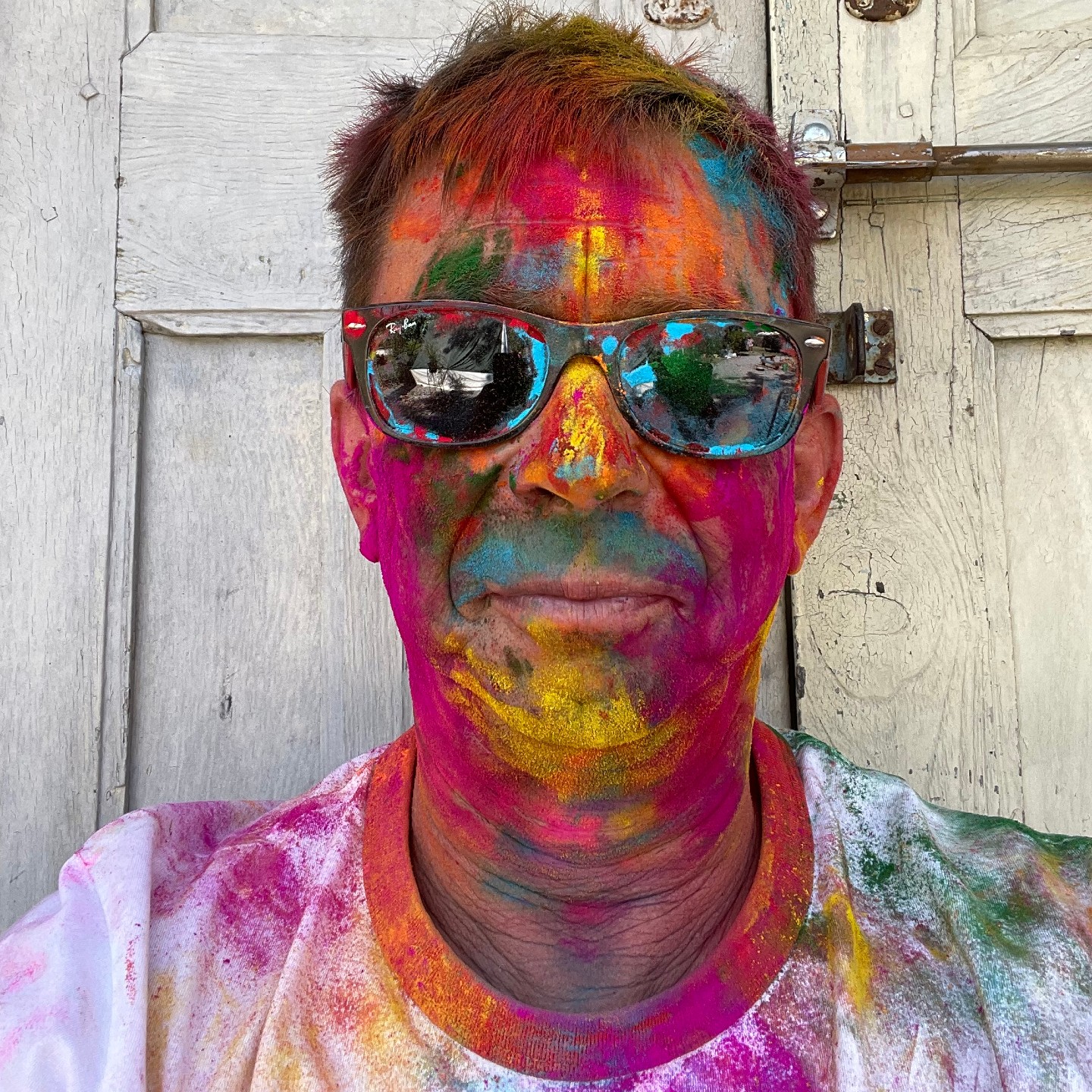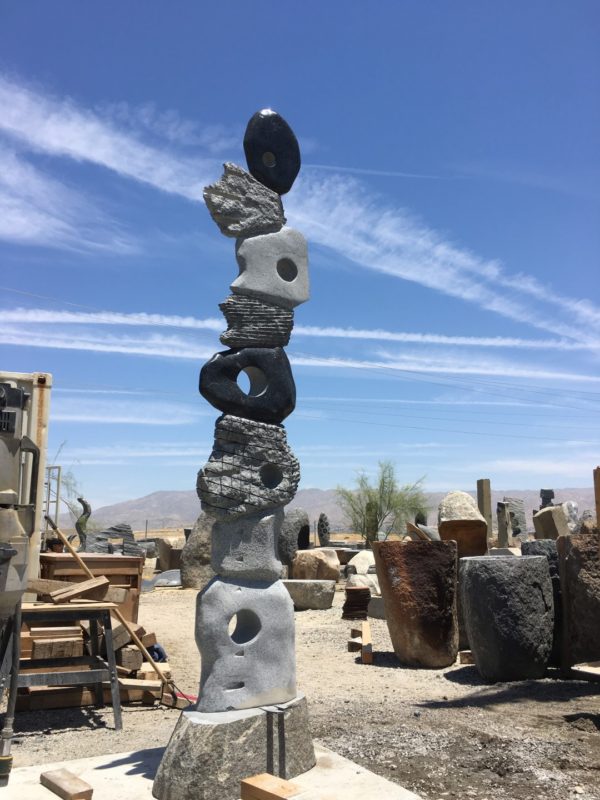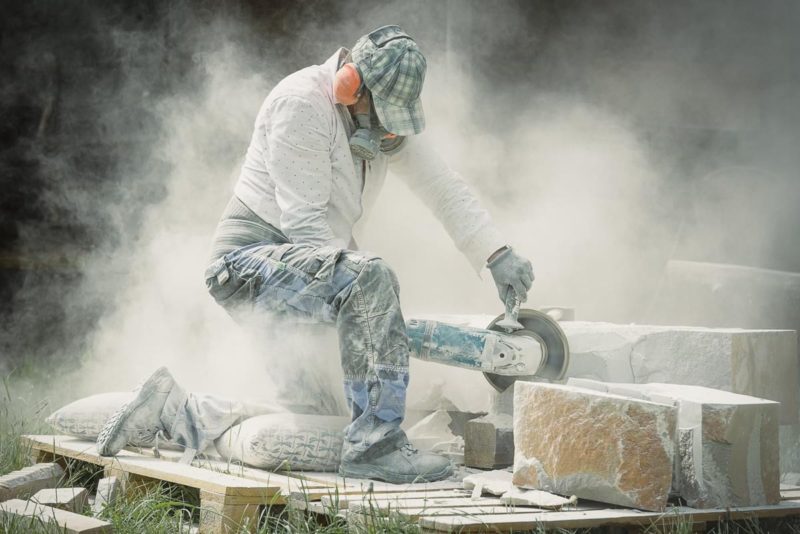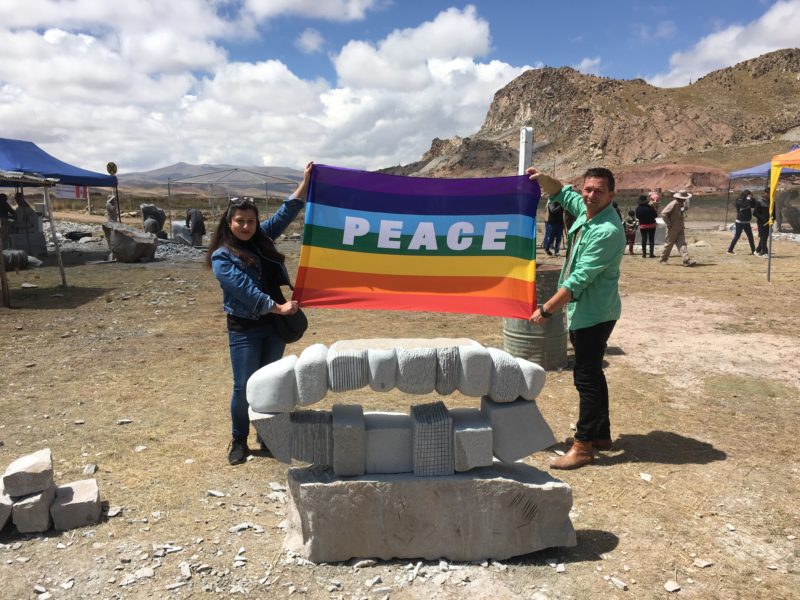Jorg van Daele is a Belgian sculptor who creates large-scale artworks around the world. He can be rarely found at home: Once he finishes one project, there comes another one in a new country. Fine Art Shippers spoke with him about what it takes to be a sculptor, his travel experiences, and the discoveries he has made along the way.
Artist Talk: Jorg van Daele on Peace and Traveling the World
How did you start out in sculpture, and why did you choose this specific medium? What drew you to it?
Jorg van Daele: I grew up in an artistic family. My mother was a painter, so paints, brushes, and canvases were our toys. I remember my first real painting was when I was around five. And I painted until the age of nineteen or twenty, making really large artworks, some 6.5 to 10 feet. But although I enjoyed it, I felt it wasn’t my cup of tea.
At some point, I attended a sculpture symposium in Belgium. I was captivated by the sight of sculptors skillfully shaping stone with machines, grinders, chisels, and other tools. It was a revelation for me; I instantly knew that sculpture was what I wanted to do.
I engaged in conversation with one of the sculptors and asked if he could teach me sculpture. He kindly agreed and became my mentor. I began working with clay, creating torsos and faces, learning the art of molding, and then with bronze and wood. But it was the stone that resonated with me the most, and I found great satisfaction in sculpting with it. Making that decision was one of the best things I've ever done, and I’ve never regretted it.
You travel a lot, creating sculptures all over the world. Please tell us a little about your nomadic life.
I create sculptures on-site because all of my works are large-scale and can't be easily transported. For example, one of my latest artworks in South Korea weighs 17 tonnes and stands 22 feet tall. I love working with local stone and engaging with the local culture and people. This is such an enriching experience; it's the best part of my work.
Who usually commissions your sculptures?
Most of the time, the commissions come from municipalities, museums, or sculpture gardens. I also take private commissions from individuals who approach me. It all differs as each country has its unique approach to art funding.
Could you talk about your creative process? So you arrive in a new country or a new place. What gives you an idea of how your sculpture should look like? What concepts do you seek to convey?
The first involves submitting applications, where I have to create a model based on provided topics and specifications, such as the size and type of stone. I then send my proposed sculpture for consideration. The second scenario affords me total artistic freedom. I simply book a ticket, arrive in a new place with an open mind, and prepare to discover what the country has to offer. I want to be surprised by the environment and culture. My overarching theme for most of my work is peace, so I always aim to find a fresh interpretation of this theme using local motifs
Sculpting is a physically demanding job. What does the process look like from this perspective?
The process varies depending on the stone and the model I create. Typically, I bring along both large and small grinders as well as some pneumatic tools for crafting smaller details and structures. Each stone requires different discs, which we either source on-site or bring with us. Given the tight schedules, we often rely on machinery for most of the work, although it's entirely possible to execute everything by hand.
The type of stone we engage with is crucial. For instance, granite, due to its toughness, requires more time than the softer limestone. We usually have between two and four weeks to complete a sculpture, with grinding work consuming the most time. The decision to polish the sculpture or not also impacts the duration of the project. On occasion, we enlist assistants for tasks like rotating or moving the stone, but generally, we operate as a small team of five or six people.
Can you share some of the projects that are especially dear to your heart?
Oh, there are so many! Mongolia, Iran, Mexico, Bolivia, Zimbabwe, India ... In each country, there were specific challenges, whether it is the political climate and resulting restrictions or the physical environment. For example, in Bolivia, I worked at high altitudes with limited oxygen. However, everywhere I went, I had fascinating and unique experiences, meeting amazing and warm-hearted people. I cherish these memories and am eager to explore as many places as possible. To date, I have done fifty projects in thirty countries.
Once participating in a symposium became a turning point in your life. Since then, you’ve organized numerous symposiums yourself. What does that bring you professionally and personally?
I love organizing symposiums and events to introduce people to the world of sculpture. It's a way to get them involved and interested in this beautiful art form. When I was younger, I was inspired by someone like me who was passionate about sculpture, and I believe the same can happen to others. I truly enjoy bringing people together. Recently, I had a significant symposium in Belgium with international artists, where we worked on massive three-ton stone sculptures.
A symposium requires a lot of effort to organize. Do you have partners?
I often collaborate with municipalities in Belgium. They provide logistical assistance and heavy equipment such as cranes for our work.
Besides being a sculptor, you also run a gallery called New Jorg Gallery. What does it specialize in?
I collaborate with artists from more than sixty countries I've traveled to–I've met so many amazing people around the world! I prefer to work with those I know and trust; it allows me to tell more personal stories about their art in the gallery. I organize two to three exhibitions each year, featuring six to seven artists.
Can you share some of your ideas for the future or some of the upcoming projects?
I want to organize an exhibition centered around the theme of peace. I believe that as artists, we can rise above conflicts because art unites people. I would like to address conflicts in general; there are so many of them around the world, be it Russia and Ukraine, South and North Korea, Iran and Israel. Wars and conflicts only bring suffering. But what we all need is peace.
Interview by Inna Logunova
Photo courtesy of Jorg van Daele



